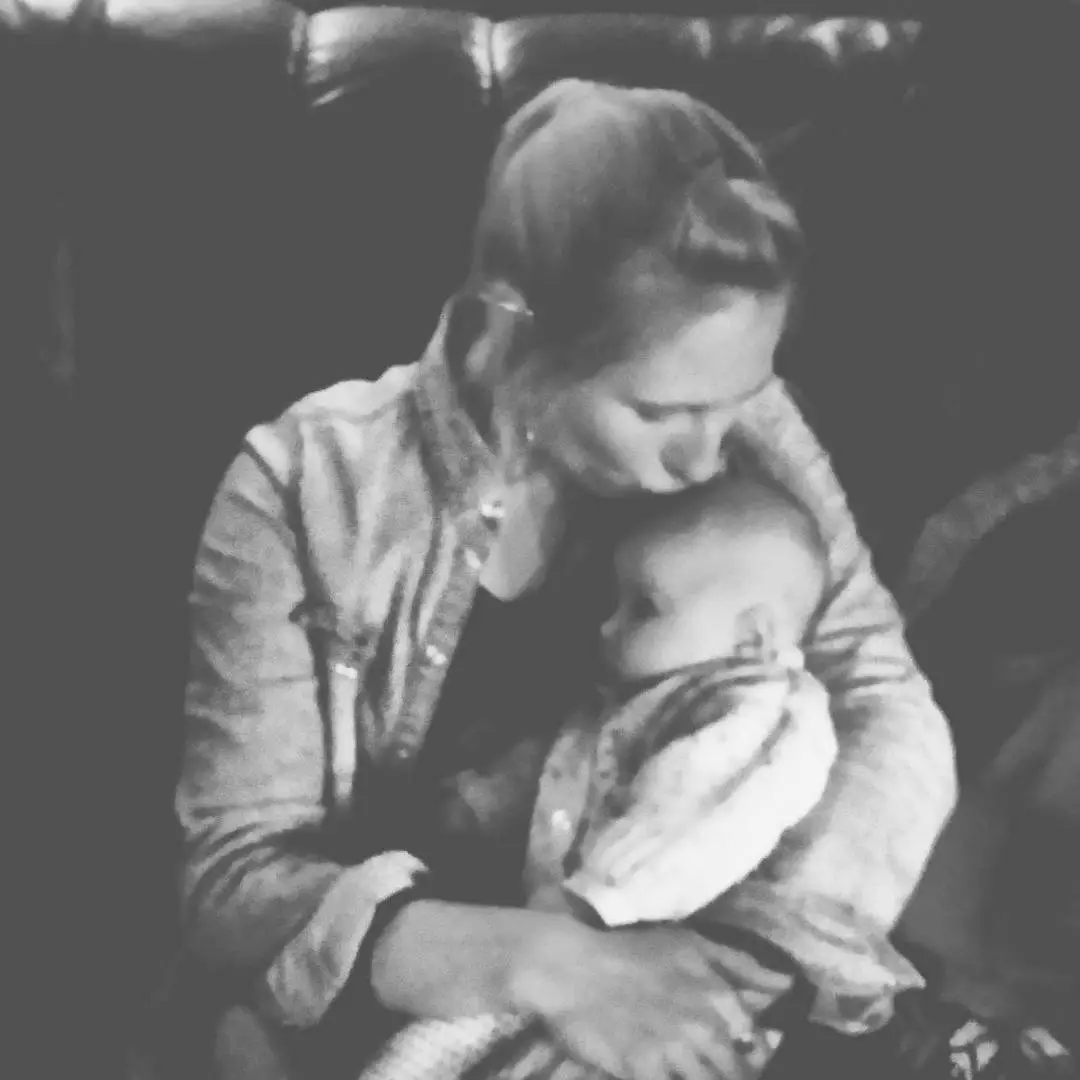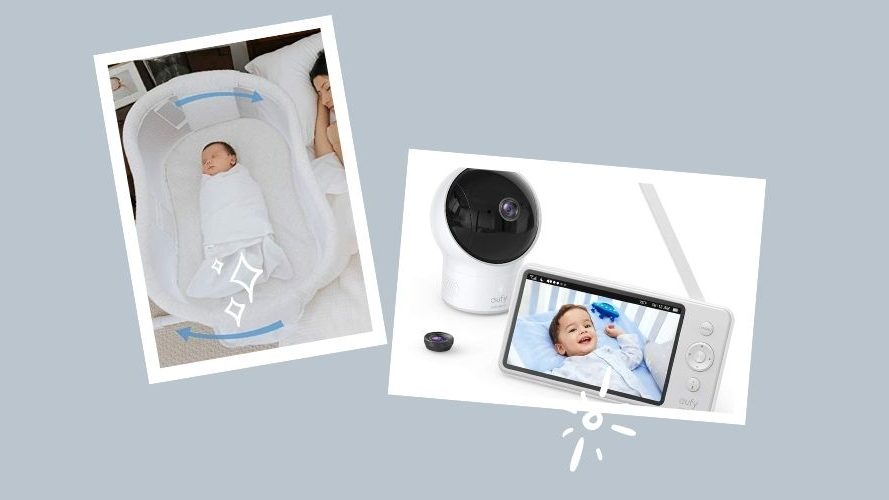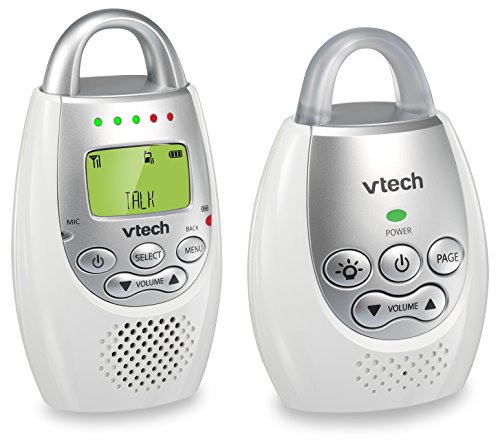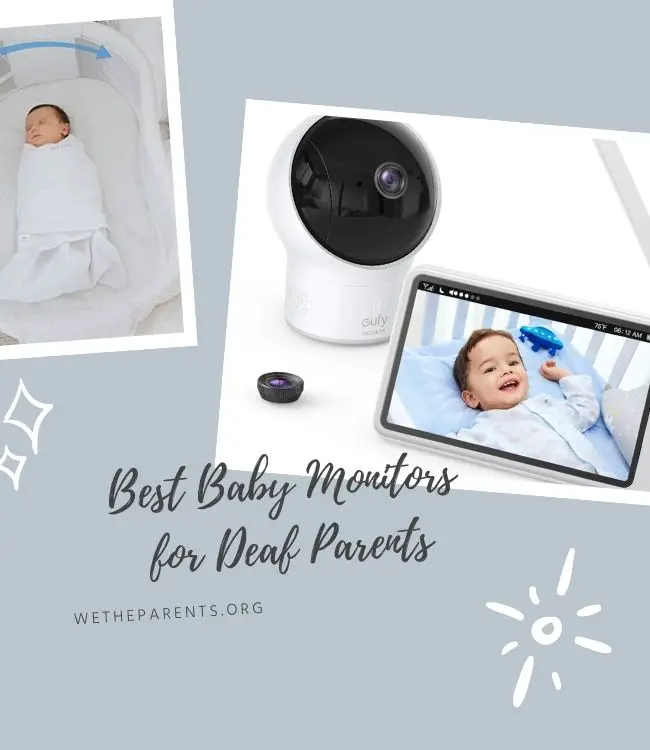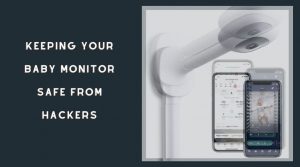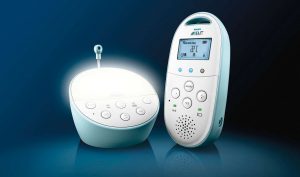Baby monitors provide anxious new parents with peace of mind, but traditional audio alerts do little to help those with hearing impairments.
We’ve spent hours researching baby monitors with the intention of helping deaf and hearing-impaired expectant parents navigate the often unaccommodating baby gear marketplace.
If you’re hearing impaired or deaf and looking for a suitable baby monitor, you’ll probably find it here — so let’s dive in!
In this article:
How to choose the best baby monitor for deaf parents
According to the World Health Organization, millions of people across the world (more than 5% of the entire population) live with a major hearing loss. 1Deafness Deafness – WHO
For those who are deaf or hard of hearing, finding a suitable baby monitor can sometimes prove challenging. After all, babies cry to communicate that they’re hungry, uncomfortable, soiled, or just in need of comfort.
Baby “codas,” or the children of deaf adults, are too young to understand why their parent(s) can’t ‘hear’ them.
Those who are deaf (or hard of hearing), have little use for traditional auditory devices; which is where alternative functions like video, vibration, and lights, come into play.
- Video: Videobaby monitors enable deaf parents to keep an eye on their little ones when not in the same room. A high-quality camera and high-definition video monitor allow parents to see their baby in real-time. Wide-angle and fish-eye cameras provide you with a broad perspective of your child’s bedroom. It’s also useful to be able to pan, zoom, or tilt the camera to hone in on them. Added to this, some units can be connected to multiple cameras, enabling parents to keep track of more than one child or room.
- Light indicator: Many monitors are equipped with light-up signals which activate when detecting sound or motion in the baby’s room.
- Sound indicator: If your spouse or caregiver is not hearing-impaired, or you just occasionally use a hearing aid yourself, you could choose a monitor that features audio alerts.
- Vibration: Vibrating alerts are excellent for those who don’t want to be weighed down by visual or audio alert systems. These systems vibrate when the baby makes a sound, much in the way that cell phones vibrate while on silent mode.
- Battery: The average baby monitor lasts from 8 to 10 hours before needing recharged. Your device must hold enough juice to carry parents through the night. Keep in mind that most modern monitors feature rechargeable batteries, though these tend to lose power over time.
- Ergonomics: If you’re performing chores or watching Netflix after your baby falls asleep, you’ll want a parent unit that’s small enough to take on the go. If your monitor can be paired with a smartphone, then this shouldn’t be a problem. For the most part, your parent unit should be small enough to slip into your back pocket.
- Extras: Many contemporary baby monitors enable parents to track their little one’s vitals, including their heart rate, oxygen level, and, occasionally, the actual temperature of the nursey.
- Two-way communications: Moms and dads can also benefit from talk-back two-way communication and lullaby/white noise features on their baby monitors. These will enable caregivers to calm an upset baby without having to get out of bed.
Why do I need to track my baby while they sleep?
The American Academy of Pediatrics’ (AAP) most recent sleep guidelines suggest that babies sleep in the same room as their caregivers until they are 6 months old. 2How to Keep Your Sleeping Baby Safe: AAP Policy Explained How to Keep Your Sleeping Baby Safe: AAP Policy Explained – healthychildren.org
Many of today’s caregivers begin sleep training even before this. Studies support the idea that successful sleep training results in better parental sleep and less parental depression. 3Babies and sleep: a matter of choice Douglas, P. S. (2017). Babies and sleep: a matter of choice. MJA Insight, 34.
There are several benefits to having babies sleep in their own beds. You can eliminate loose bedding, roll-overs, falls, and other risks associated with bed-sharing. However, when babies are in their cribs, parents often have no way of knowing when they need to be fed, comforted, or rescued.
Our top picks for the best baby monitors for deaf parents
Looking for the top baby monitors for deaf parents? We’ve collated expert reviews and opinions to bring you five of the best baby monitors for hearing-impaired parents and caregivers.
Best visual baby monitor
Our opinion
Heading up our list of baby monitors is the Infant Optics DXR-8 (check price on Amazon). Firstly, we love the simple, straightforward interface of this monitor.
You receive one compact parent unit (3.5-inch screen) and one Infant Optics camera. Should you want to keep watch over multiple children or rooms, you can add up to four cameras.
You can also pan, tilt, and zoom the camera, which is particularly helpful in managing toddlers while on the go.
While the Infant Optics DXR-8 only offers audio and video indicators, it’s still one of our favorite monitors for hearing-impaired parents as you can stuff it into your back pocket as you navigate around the house.
It has a range of approximately 700 feet, while the battery lasts all night when the audio function is shut off.
What we love
- You can remotely pan, tilt, or zoom the camera.
- You can connect up to four cameras to keep an eye on multiple rooms.
- The compact parent unit can be carried around with ease.
Watch for
- Doesn't feature any dynamic visual or vibration indicators.
Best vibrating baby monitor
Our opinion
The VTech DM221 (check price on Amazon) is a two-way audio monitor that utilizes a dynamic visual and vibration alert system that indicates when a baby is crying or cooing.
The parent unit features a five-bar audio indicator that lets caregivers visually monitor noise levels in the baby’s room.
The monitor has a tremendous range, offering up to 1,000 feet outdoors and 160 feet indoors. The unit can be clipped onto a belt or used hands-free for on-the-go monitoring.
The rechargeable batteries last for up to 18 hours on a full charge, while you can also use two AAAs if you’re in a pinch.
Moms and dads can utilize the monitor’s two-way talk-back feature to soothe an upset baby without having to get out of bed.
They can also set the unit to vibrate when there are sounds (such as crying or cooing) on the baby’s end. This baby monitor will, without doubt, enable deaf parents to easily monitor their baby from a distance.
What we love
- A five-bar light-up sound indicator bar lets you know when baby is making noise.
- Battery lasts for over 18 hours on a single charge.
- Reliable vibration alert lets deaf mothers and fathers know when baby is crying.
Watch for
- There’s no visual indicator for quiet, yet mischievous, toddlers.
Baby monitor with best video quality
Our opinion
The Owlet Smart Duo (check price on Amazon) enables parents to watch and gather information about their babies.
This kit comes with an award-winning smart sock, an Owlet camera, and a base station.
It lets you visually monitor your little ones and keep tabs on their oxygen level and heart rate.
While the smart sock is only suitable for children up to the age of 18 months, the cam can be used to track children of all ages.
The device can be safely synced to a smartphone, giving anxious first-time parents unlimited range.
You can set the base station on the top of your bedside table and use the multicolored light indicators to keep track of your baby throughout the night.
You can also sync the devices to your phone to receive HD video and other data in the palm of your hand.
This package is excellent for tech-obsessed parents, though with various components to recharge, these devices can be a hassle.
What we love
- This monitor system can be safely paired with a smartphone or other Bluetooth-compatible device.
- Ensures that your baby’s heart rate and oxygen levels are always within the preset “safe” zones.
- High-definition video lets you watch your little one without having to get up.
Watch for
- The smart sock is not suitable for babies over the age of 18 months.
Our fourth choice
Our opinion
The Eufy Baby Monitor (check price on Best Buy) is an advanced video monitor that’s perfect for hearing-impaired parents. First of all, the 100-degree wide-angle camera lens offers parents a full view of their little one’s nursery.
Plus, the cam’s pan, tilt, and zoom viewing options come in handy during late-night escape attempts. The camera is also capable of transmitting video during low and no-light conditions.
The Eufy is one of the slimmest and most lightweight parent units we’ve come across, so it’s perfect for on-the-go parents. With its exceptionally long range, you need never worry about losing your connection.
The unit also features a variety of visual and audio reminders for times when your baby gets loud. Whether you’re deaf or a heavy sleeper, there’s no way you’ll sleep through the unit’s extended alarms.
This unit will serve you and your little one from infancy to beyond, so while looking for a digital baby monitor for deaf parents, be sure to check out the Eufy.
What we love
- The 15-hour battery life enables you to keep an eye on your baby all day and night.
- Features a 720p HD monitoring screen with a 5-inch display.
- Parents can pan, tilt, and zoom to see their baby’s entire room.
Watch for
- The white noise feature only functions for 30 minutes, which may not be enough for your little one.
How do baby monitors work for deaf people?
Deaf parents utilize baby monitors to pick up movement and sound in their baby’s room. They may also use a camera to stream video to a wireless monitor or smartphone.
In this case, the camera must be able to pick up images in low light. Other devices light up or vibrate when a baby moves, cries, or simply makes a sound.
Do I need a baby monitor?
Baby monitors enable parents to observe their baby while in a different room. For many parents, baby monitors ease anxieties, enabling both parents and children to enjoy a peaceful sleep.
While these devices are incapable of preventing sudden infant death syndrome (SIDS), many parents use them to track their babies’ heart and oxygen rates. 4Do Baby Monitors Help Prevent SIDS? – Nationwide Childrens
Are WiFi-enabled baby monitors safe?
In recent years, hacked baby monitors have made headlines although the connections on these devices are generally very secure. Choose a monitor with at least a 2.4-GHz frequency.
What’s more, make sure to set a password on your baby monitor and Wifi. And keep an eye out for monitors with frequency-hopping spread spectrum (FHSS) technology.
These types of devices should offer plenty of security because the signal is scrambled and comes in at different frequencies at random.
How far do baby monitors reach?
The range of your baby monitor will depend on the model and unit you use. However, be wary of the manufacturer’s often exaggerated range claims.
Concrete walls and insulation can have an unfavorable effect on your monitor while your device may struggle to compete with other electronic devices in your house.
If you live in a small house or apartment, 100 feet of reach should be adequate, and consider something stronger if you’re baby’s room is on a different floor than yours.
For how long should I use my baby monitor?
Every situation is different. Some parents may stop using their baby monitors as soon as their little one is capable of sleeping through the night, which is usually around the 6-month mark.
Others may keep their monitors rolling as their babies enter the notoriously mischievous toddler stage. Remember, there’s no right or wrong answer — simply do what feels right for you and your family.
My baby is a noisy sleeper, how can I be sure the baby monitor won’t keep me up all night?
Some baby monitors enable parents to tone down the sensitivity of the base unit, ideal for parents who don’t want to be alerted whenever their child sneezes, coughs, or snores.
The bottom line
Hearing-impaired parents have their fair share of challenges to face. A reliable baby monitor makes it easier (and safer) for deaf parents to set their children down to sleep.
In our humble opinion, the best baby monitor for deaf parents is the Infant Optics DXR-8, which offers high-quality video monitoring, an impressively wide frequency range, and a long-lasting rechargeable battery.
The Summer Infant Babble Band is also a great option for parents who don’t want to be bogged down by yet another screen.
Meanwhile, the Owlet Duo is an excellent package for anxious first-time parents for whom cost isn’t a major concern.

